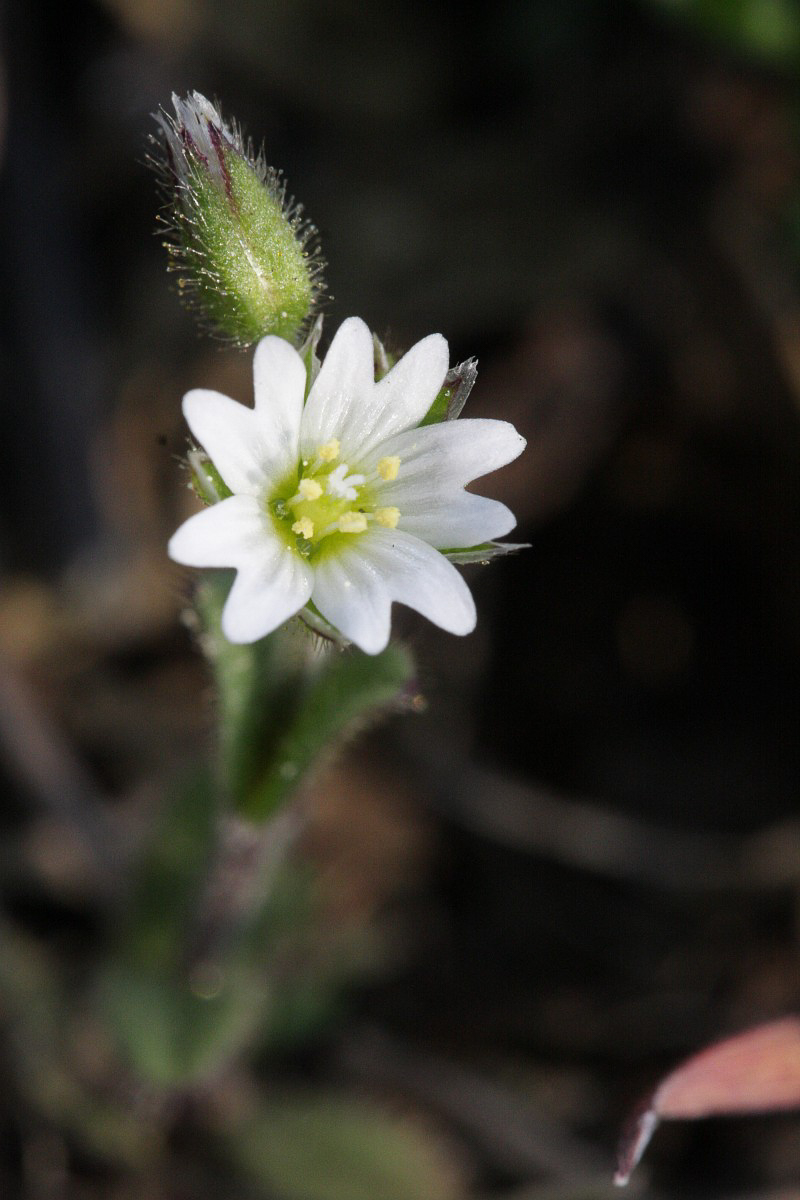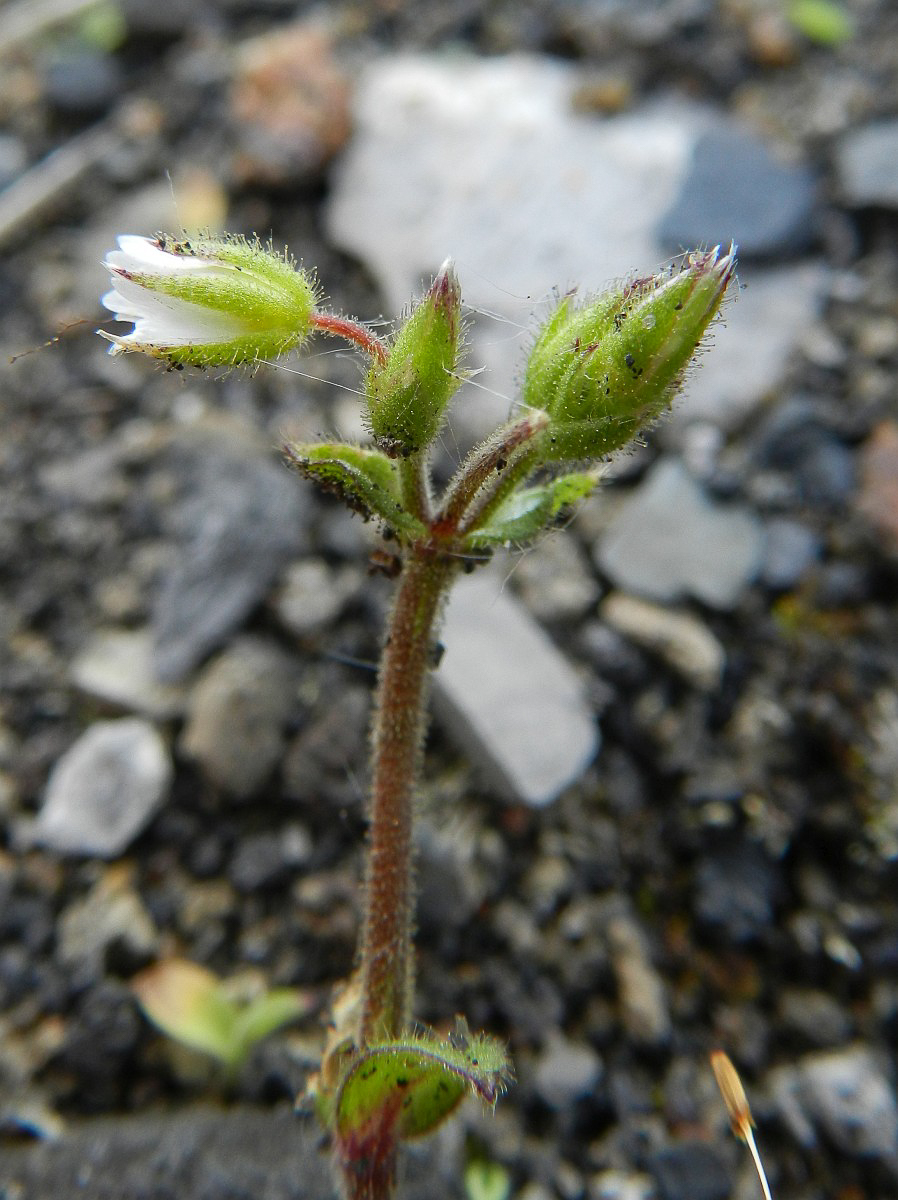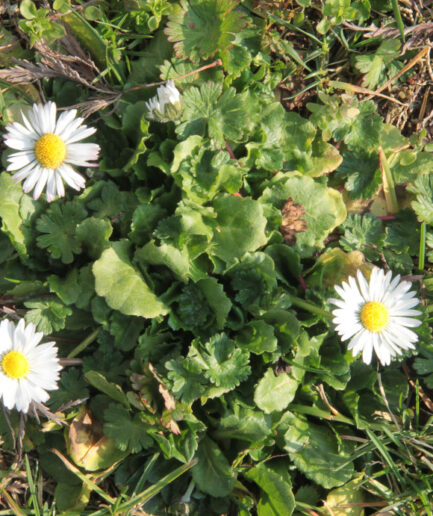Sticky Mouse-ear Chickweed
Scientific name: Cerastium glutinosum Fr.
Family: Caryophyllaceae
MORPHOLOGY
Habit and dimensions: An annual herbaceous plant, ranging from 5-25 cm, glandular-viscid.
Stems: Ascending-erect stems with dichotomous branching.
Leaves: Opposite, entire, lanceolate-ovate (3-7 x 5-15 mm).
Flowers: Multiflorous dichasial cyme, with fruiting peduncles up to 1 cm long; lower bracts leafy, hirsute, hermaphrodite flower, actinomorphic, dialipetalous, pentamerous, 5 free sepals, 5 white petals, bilobed up to 1/3 of the length. Blooms from February to July.
Fruits and seeds: Capsule with 10 teeth, 7-8 mm.
DISTRIBUTION AND HABITAT
Found throughout Italy except in Sardinia. Thrives in ruderal and semiruderal environments, including sandy areas and rocky outcrops between 0 and 1,400 m.
Photo: under the free license of Saxifraga and Rutger Barends





















